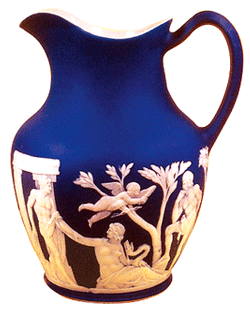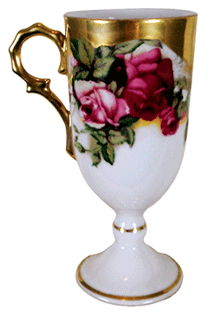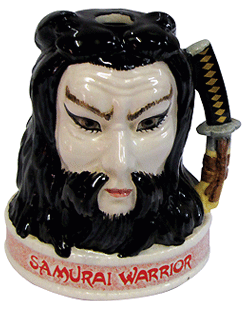- Publisher's Note
- Editorial
- Love of Life (that) Spills Over
- A Continuing Multiplication
- From Painting to Print
- Intimate Involvement
- Portrait of the Artist as an Old Man
- (Hi)Story of the Garhi Printmaking Studios, New Delhi
- Surinder Chadda
- Ramendranath Chakravorty
- Group 8
- Mother and Child: A Screenplay
- Straddling Worlds
- A Brief History of Printmaking at Santiniketan
- Vignettes from History
- Southern Strategies
- The Forgotten Pioneer: Rasiklal Parikh
- Printmaking in the City Of Joy
- Amitabha Banerjee: His Art and Aesthetic Journey
- Local Style and Homogenizing trends: Early Medieval Sculpture in Galaganatha
- English China: Delicate Pallid Beauty
- The Beauty of 'Bilal'
- Photo Essay
- The Way of The Masters: The Great Artists of India 1100 –1900
- Striving Towards Objectivity
- The Art of Sculpting In the Contemporary Times
- An Artistic Framework for an Alternative to Ecology
- Bidriware and Damascene Work in Jagdish and Kamla Mittal Museum of Indian Art
- A Lowdown on the Print Market
- The 'bubble' and the 'wobble'
- What Happened and What's Forthcoming
- Art Bengaluru
- Art Events Kolkata: June – July 2011
- Musings from Chennai
- Mumbai Art Sighting
- Previews
- In the News
- Christie's Jewellery Auction at London, South Kensington
ART news & views
English China: Delicate Pallid Beauty
Volume: 3 Issue No: 19 Month: 8 Year: 2011
Collectible
by Arunima Sen
 The soft, opalescent glow, the delicate pallid beauty and the wonderfully fluid texture of ceramic has admirers from all over the world, and the wonderful creations of English china is rated as a prized collection in the higher echelons of china earthenware. Evolved from the simple pottered utensils and containers from as early as 3500 BC in England, the sublime English china that enthralls collectors today originates from the wares manufactured in the Straffordshire district in England from the early 1600s. In fact, the easy availability of the most integral raw materials of china clay and coal,
The soft, opalescent glow, the delicate pallid beauty and the wonderfully fluid texture of ceramic has admirers from all over the world, and the wonderful creations of English china is rated as a prized collection in the higher echelons of china earthenware. Evolved from the simple pottered utensils and containers from as early as 3500 BC in England, the sublime English china that enthralls collectors today originates from the wares manufactured in the Straffordshire district in England from the early 1600s. In fact, the easy availability of the most integral raw materials of china clay and coal,  was the primary reason why Staffordshire became the cynosure of the china-industries in England, and with the prosperity of the Empire, Staffordshire china won many admirers from all over the world. At that time, it also found a readily emergent, economically viable market in America and the East Indies, and by 1800, English china was the most valued addition to any American table.
was the primary reason why Staffordshire became the cynosure of the china-industries in England, and with the prosperity of the Empire, Staffordshire china won many admirers from all over the world. At that time, it also found a readily emergent, economically viable market in America and the East Indies, and by 1800, English china was the most valued addition to any American table.
Although natural industrial decline had led the Americans to scout for other European manufacturers of china, namely France, Germany and Belgium, the Staffordshire china continues to symbolize the fine aesthetics of English china to the rest of the world. Represented by impeccable workmanship from the clusters of industrial towns like Stoke and Hanley, English ceramic articles remain as some of the most prized possessions across the world. Every piece of English china bears its maker's mark, a mark of the legacy of fine workmanship and a rich heritage of artistry and it is that mark that makes the china special. For collectors of delicate chinaware, the most important criteria for valuing a work of art are the particular type of ceramic body,  the respective manufacturer and the manufacturer's mark.
the respective manufacturer and the manufacturer's mark.
Among the different existing types of English ceramic body, namely, earthenware, stoneware and porcelain, the latter is valued universally for its beauty, its innate luminosity and it's often- translucent nature. Porcelain articles are, again, further divided into three primary categories bone china (name derived from a manufacturing process which uses calcined animal bones), soft paste and hard paste. From as early as the early Eighteenth Century, England has been regarded as the world's primary manufacturer of bone china, and that status still holds ground despite massive modernization drives in the bone china industry.  Today, English bone china pottery is a veritable collector's item and continues to fetch high prices at auctions and private transactions all over the world.
Today, English bone china pottery is a veritable collector's item and continues to fetch high prices at auctions and private transactions all over the world.
The decorations applied on the ceramic are another mark that intrigues collectors, and often causes rather sharp inclines in price listings for ceramic wares. Divided roughly into transfer and non-transfer decorations, there are many kinds of decorations that are applied to English ceramic pottery, including the likes of Chinoiserie, Bat printing, Basket-weave and Japonaise.  These styles and modes of decorations are usually associated with particular manufacturers, and were instantly identifiable from the manufacturer's insignia or the coat of arms printed on the product. These marks tell the collector not only about the particular manufacturer, but also the approximated age of the china. The marks themselves were either incised, impressed, hand-painted or printed. With age, these marks have been instrumental in providing accurate information pertaining to the manufacturing process, and often the manufacturing factory itself. For collectors who would want to know more about the marks, and how they could be used to determine the quality of any given English china, Geoffrey Godden's comprehensive Encyclopedia of British Pottery and Porcelain Marks would be an excellent place to look.
These styles and modes of decorations are usually associated with particular manufacturers, and were instantly identifiable from the manufacturer's insignia or the coat of arms printed on the product. These marks tell the collector not only about the particular manufacturer, but also the approximated age of the china. The marks themselves were either incised, impressed, hand-painted or printed. With age, these marks have been instrumental in providing accurate information pertaining to the manufacturing process, and often the manufacturing factory itself. For collectors who would want to know more about the marks, and how they could be used to determine the quality of any given English china, Geoffrey Godden's comprehensive Encyclopedia of British Pottery and Porcelain Marks would be an excellent place to look.
The nature and the type of the molded, or the applied decoration also reveals a lot of information about the prevalent trends of a particular manufacturing unit, or a particular manufacturing trend.  From delicate colored layers that often have beautiful motifs, to the apparently décor-less, majestic White Ironstone- decorations are always present in English China Pottery. Actually, the White Ironstone deserves special mention as one of the most sought-after pieces of English ceramic art. The luminous white body might look uniform and devoid of color enhancements at first sight, but the body often reveals molded decorations, or applied decorations as contoured works mostly embossed motifs and relief works. One of the most used colours in English china is blue. The credit for discovering that mineral cobalt could withstand high degrees of temperature rests with the Chinese- and this trend was followed by the English who used the colour for underglaze decoration ( permanent decoration applied usually by hand painting).
From delicate colored layers that often have beautiful motifs, to the apparently décor-less, majestic White Ironstone- decorations are always present in English China Pottery. Actually, the White Ironstone deserves special mention as one of the most sought-after pieces of English ceramic art. The luminous white body might look uniform and devoid of color enhancements at first sight, but the body often reveals molded decorations, or applied decorations as contoured works mostly embossed motifs and relief works. One of the most used colours in English china is blue. The credit for discovering that mineral cobalt could withstand high degrees of temperature rests with the Chinese- and this trend was followed by the English who used the colour for underglaze decoration ( permanent decoration applied usually by hand painting).

The most recognized form of applied decoration, when it comes to English china, is cameo ware. China decorated with classical figures, using this method, was made famous by the Josiah Wedgewood Company. The Wedgewood Jasper Ware has become a collector's item, and is a type of basalt or stoneware with a shiny, grainy appearance. During the late 19th Century, there was a great demand for unpainted ceramic bodies- devoid of any colour, but nevertheless, decorated. Examples would include jugs that bore Mason's mark (c.1845) which were decorated with vines, flowers and birds molded in light relief on the ironstone body. Another category of jugs, belonging to the same manufacturer, bore heavy relief work depicting hunting dogs and intricate scenic designs. Those pieces that were enhanced with colour exhibit different types and methods of decoration. Coloured glazes, enamel finishes and metallic lustres highlight or accent the molded or applied body decorations. A particularly remarkable method of applied decoration was the Tapestry, where a piece of textured fabric was fired onto the body of the china. Examples include Doulton & Slater's pitchers belonging to ca. 1886-1914- one such pitcher bears a metal hinged lid and a tapestry finish, painted brown with gold accents. The body is further covered with white enameled flowers and green leaves in the form of an intricate pattern.
Grapes and flowers, portrayed in relief upon chinaware, became a trend for certain manufacturers from the 1830s onwards.  The designs had a copper lustre, and often sported a lavender blue finish. Often called “Grandmother's Ware” in collector's circles, these pieces bearing the Chelsea Grape pattern exude a certain old world charm. Most of these articles are also unmarked- bearing thistle patterns, figural designs, Bird & Banner patterns, Chelsea Sprig patterns and so on.
The designs had a copper lustre, and often sported a lavender blue finish. Often called “Grandmother's Ware” in collector's circles, these pieces bearing the Chelsea Grape pattern exude a certain old world charm. Most of these articles are also unmarked- bearing thistle patterns, figural designs, Bird & Banner patterns, Chelsea Sprig patterns and so on.
Lastly, one definitely needs to mention Majolica- a special type of glaze applied to pottery which contains tin or lead. Developed by Spanish potters eight hundred years ago, it was used as a form of applied decoration by a number of Staffordshire manufacturers (Minton, Wedgwood and George Jones being some of them).  It gained popularity during the mid-Victorian era and sported naturalistic shapes, classical designs and very vibrant colours. A mirror-like sheen is imparted to the china because of the unique tin glaze- and the decorations are hardly monochromatic. Examples of monochrome finish include a jug manufactured by Minton in the year 1881. It has a deep yellow-gold monochrome finish featuring a scenery in relief: of a boy atop the branches of an apple tree, reaching out for a fruit. Polychromatic examples include plates manufactured by Davenport bearing beaded body designs and floral motifs in blue. Similarly, a compote impressed with the mark of George Jones (circa 1861-1873) has a white finish that surrounds the points of a large green leaf in the center.
It gained popularity during the mid-Victorian era and sported naturalistic shapes, classical designs and very vibrant colours. A mirror-like sheen is imparted to the china because of the unique tin glaze- and the decorations are hardly monochromatic. Examples of monochrome finish include a jug manufactured by Minton in the year 1881. It has a deep yellow-gold monochrome finish featuring a scenery in relief: of a boy atop the branches of an apple tree, reaching out for a fruit. Polychromatic examples include plates manufactured by Davenport bearing beaded body designs and floral motifs in blue. Similarly, a compote impressed with the mark of George Jones (circa 1861-1873) has a white finish that surrounds the points of a large green leaf in the center.
This article aims to highlight the initial ages of English china, beginning roughly from the 1600s. With the development of these basic forms of molded and applied decorations, and the proliferation of manufacturers, English ceramics became highly popular. England soon became the chief source of ceramic table-wares for Americans as mentioned earlier. Today, English ceramics are well represented in all collectible china markets throughout the world.